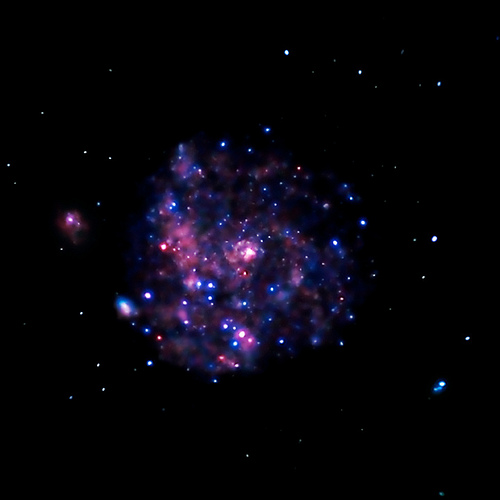Shedding a New Light on the Universe
Imaging
You are probably most familiar with the concept of an "image". When you take a picture with your camera, you are capturing the distribution of light coming into the shutter. Similarly, telescope optics work by either reflecting light with mirrors or refracting it with lenses into an eyepiece or a camera. Either way, the image created from incident light from space gets magnified, allowing us to capture spatial images of the sky. In much the same way, an X-ray telescope can concentrate the light from an X-ray star onto a small portion of an electronic eye. This detector can then record both how many photons are hitting it, which tells us about the brightness of a source, and the location where the X-ray photon strikes it, which tells us its position. Such an "imaging detector" can view several X-ray emitting objects simultaneously, like a cluster of stars, or can create pictures of regions from which diffuse X-ray emission arises, like a cluster of galaxies.
If you are looking at two stars orbiting each other, and wanted to distinguish between the two stars, or if you wanted to be able to distinguish the core of a galaxy from its surrounding disk, then you would want your detector to have good spatial resolution. Spatial resolution is a telescope's ability to tell sources apart even if they are very close together in the sky.
|
Imaging detectors give us pictures like this image of the M101 Galaxy taken by the Chandra satellite. Credit: NASA/CXC/JHU/K.Kuntz et al.
|

|

Previous |

Next |


